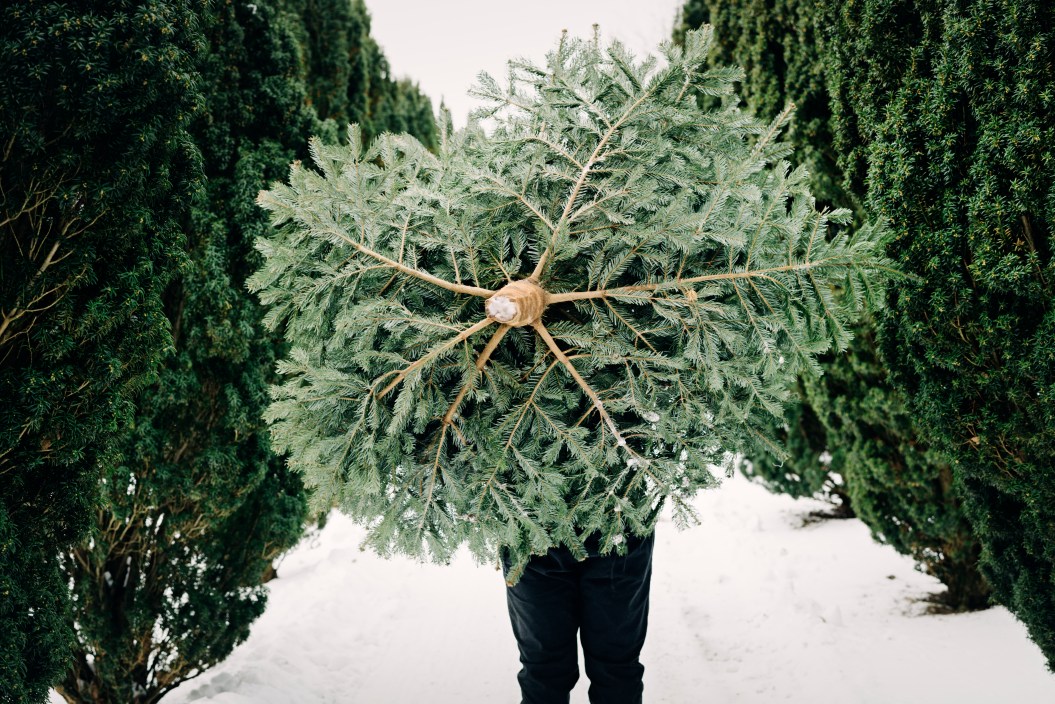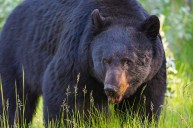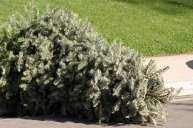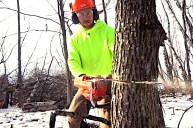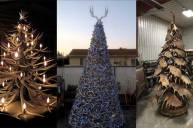Christmas is just around the corner, which means it's time to kick it into high gear, wrapping the perfect outdoor gifts for your loved ones, cooking up some game meat recipes for the big day, and, if you haven't already, putting up your Christmas tree.
While you may be tempted to drag out the fake tree from wherever it lives the other 11 months of the year, you may want to consider a real tree— and not just for authenticity's sake. Turns out, harvesting a real Christmas tree could be better for the environment than your immortal fake tree.
While fake trees may seem more environmentally sustainable than chopping down a live tree each year to display for a handful of weeks, the reality is fake trees are likely worse for the environment and our climate. Real trees are biodegradable; fake trees, on the other hand, will quite literally last forever. They are typically made of metal and polyvinyl chloride plastic (PVC), a petroleum product made from oil that does not decompose. It just breaks down into smaller parts, clogging our rivers and oceans with microplastics. PVC has also been linked to cancer in several studies.
Fake trees also have to travel an astronomically far distance to wind up in your living room; 80% of fake trees are manufactured in China. The sheer resources needed to ship all of those trees to the US are staggering, requiring untold gallons of fuel burned, which then release greenhouse gases into our atmosphere.
The Case For A Real Christmas Tree
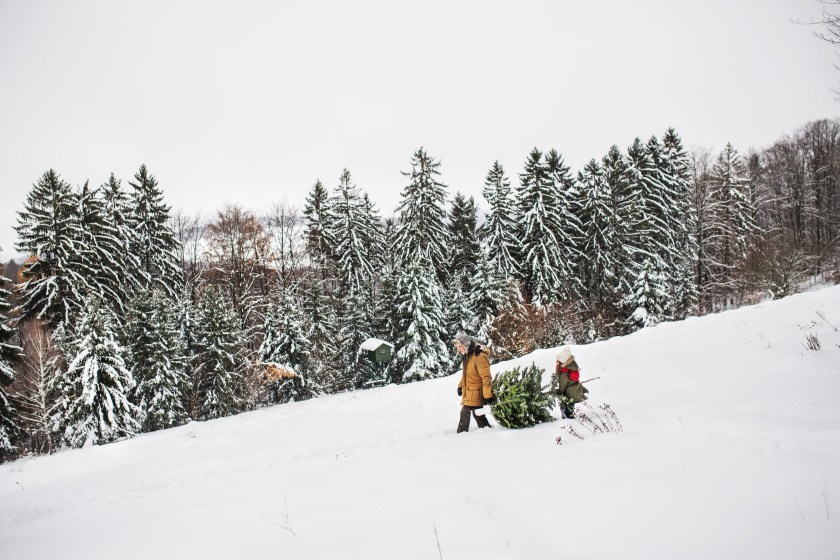
Getty Images, Halfpoint
Real Christmas trees, on average, take seven to ten years to grow to a suitable size for your living room. During that time, they absorb carbon dioxide from the air: One mature tree can absorb more than 48 pounds of carbon dioxide in a year. Carbon dioxide, produced by the burning of fossil fuels, wildfires, and natural phenomena like volcanoes, is a key player in climate change because it warms our planet.
And though Christmas tree farms typically cut down trees before they reach full maturity, they plant several new seedlings in each tree's place, ensuring that carbon dioxide will continue to be sequestered on their farm. At the Society for the Protection of New Hampshire Forests' tree farm, 7,000 trees are planted in each parcel. Before they are cut, more trees are planted in between the mature ones to ensure a continuation of the tree crop.
Beyond lessening carbon emissions, Christmas tree farms also create new, open habitats for a variety of different species. When the Society for the Protection of New Hampshire Forests decided to create a Christmas tree farm over 35 years ago, people were concerned about what would happen to wildlife on the 1,400-acre parcel.
But their fears were soon assuaged. "Bird life went up." Nigel Manley, farmer and Senior Outreach Manager of the Society, told Wide Open Spaces. "Bobolinks, which are hard to find in New Hampshire because there are no open meadows, began coming to the farm. Woodcocks come to feed between the rows of trees and do their mating dances over the fields. Raptors, particularly kestrels, like the area because mowed areas attract rodents. We put in kestral boxes and perches for them to help them kill the mice that nibble the trees."
Wildlife watching is so excellent at the Society's Christmas tree farm, "The Rocks," that it's even listed in the state's Wildlife Viewing Guidebook. Foxes and coyotes have created dens on the land, and moose, deer, bobcats, and fishes roam the forested acres.
Freshly harvested trees also, unlike fake trees, likely came from your immediate area, requiring little more than a drive over from a nearby town to wind up in your living room. This not only reduces the resources used to acquire your tree, but it also ensures that people in your local area stay employed during the holiday season; over 100,000 people are employed full or part-time in the Christmas tree farm industry.
How to Get Rid of Your Christmas Tree Responsibly
An important aspect of enjoying the environmental benefits of a real Christmas tree is also ensuring its proper disposal. Many real Christmas trees end up in landfills, where they contribute to the emissions of methane, another greenhouse gas like carbon dioxide. To ensure your Christmas tree doesn't end up like this, research Christmas tree disposal in your town. Often, city sanitation departments or even Boy Scout troops will organize Christmas tree pick-ups. These trees are then chipped, mulched, and used to nourish other plants and trees in your local area. In New Jersey, they're used in dune restoration projects. You can also tuck your tree in your backyard next to a bird feeder to provide perches or sink it into a pond on your property (if you're lucky enough to have one) to provide habitat for fish.
For the Adventurous: How to Cut Down Your Own Christmas Tree
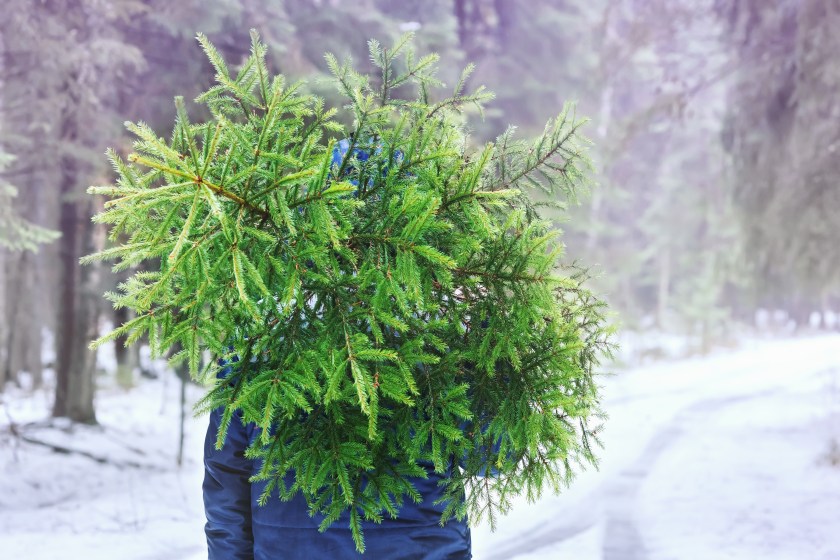
Getty Images, Bermuda Cat
While most people look forward to the actual decorating of the tree, ever since I can remember my favorite part has been actually getting the tree. For as long as I can remember, my family has been harvesting their own trees, either from our backyard or the national forests surrounding us.
Most national forests allow you to harvest Christmas trees with nothing more than a Forest Service permit. This varies from forest to forest, but in the White Mountains National Forest of New Hampshire, where my mom lives, for $7.50 we can print out an online permit and head to the woods with our saw. This year, we walked up an old logging road twenty minutes from the house and came back with a beautiful red spruce tree that we cut down ourselves. Not only did it make for a fun day in the woods, it was vastly cheaper and more memory-making than picking out a real tree at the local Christmas tree yard.
It also can help keep your national forest healthy. Cutting down thin trees in densely forested areas can help other trees receive the nutrients they need to thrive. On the other hand, if you cut the tallest, nicest-looking balsam fir down in the forest, you're removing those genetics from the area, which could in turn harm the forest as a whole. If you do choose to harvest from a national forest, go for the Charlie Brown tree. Otherwise, stick to Christmas tree farms if you want the full, traditional tree. THankfully, most Christmas tree farms in the US are all the same. When asked how to know which Christmas tree farm to support, Manley said, "Every farm is different but they're all managed similarly. Some are huge, some are not, but they're all sustainable and most are still family farms with the families still living on them."
READ MORE: Five Tree Species You Should Be Able to Identify In the Woods
